If a signal fails several times every 8 hours, the location and number of faults are all random. What do you think about this signal?
For a pulse signal with a long idle time, a high-frequency serial bus signal, a small probability burst or a glitch signal, how can it be monitored for a long time and captured at a high sampling rate? In this paper, the application of the 8-hour vibration test to capture the signal of small probability failure zone is discussed.
One or eight hours of oscillation testTaking the connector test of the vibration test as an example, during the whole process, the number of times that the connector may have a secondary failure zone is monitored, and the product is qualified.
Test requirements:
The entire vibration test lasts for 8 hours. During the whole process, the connector may have 0~10 times failure zone, the duration is more than 300ns, and the amplitude is uncertain (normally, the level is 1V).
Test difficulties:
1. The vibration test lasts for 8 hours, and the oscilloscope is difficult to realize based on large time base recording, and the sampling rate is not enough;
2. The vibration noise of the vibration laboratory is large. The spike waveform and the clutter are mixed together during the failure, and it is difficult to test the failure zone signal.
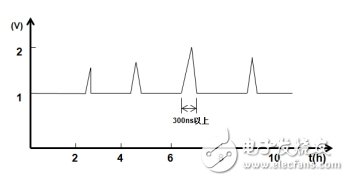
Figure 1 test waveform
For the above test problems, the oscilloscope's segmented storage function provides a good solution.
First, according to the characteristics of the abnormal signal, set the oscilloscope to capture the trigger condition (including trigger level, trigger mode, time base, segmentation storage, segmentation number, etc.), perform 8 hours of vibration test monitoring, and capture the abnormal situation as shown below. :
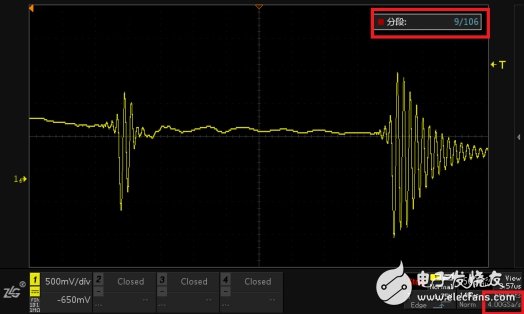
Figure 2 exception capture
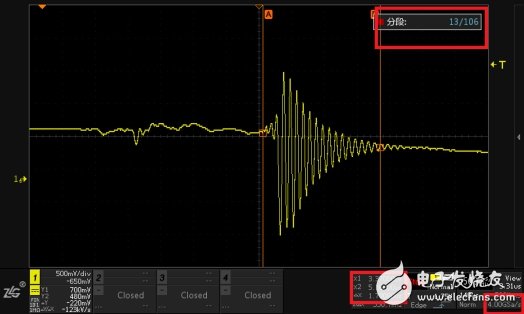
Figure 3 segmentation storage
As shown in Figure 3 above, in the test cycle of up to 8 hours, a total of 106 abnormal waveforms were captured. The upper graph shows the abnormality of the failure zone and signal characteristics of the 9th and 13th segments. The current sampling rate is still 4GSa. /s.
In other words, segmented storage can solve your problem of oscilloscope!
Second, what is segmentation storageThe segmentation store performs multiple triggers during the acquisition process, and the data obtained by each trigger sampling is stored in a small piece of storage that divides the storage space. The oscilloscope triggers filling a segment at a time, and the idle signal between the segment and the segment or the portion of the signal that is not of interest is not collected and stored.
The principle is as shown in the figure below: the total storage depth is divided into n segments, the first segment is used for display, and the second segment is stored, that is, the data collected when the first trigger occurs is stored in the second segment storage space. After the second storage space is full, the first trigger is ended, waiting for the arrival of the second trigger. After the trigger, the data is stored in the third storage space, and so on.
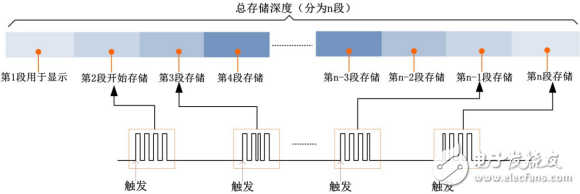
Figure 4 segmentation storage structure
If the total storage depth of the oscilloscope is 512 Mpts, the formula for calculating the number of segments is as follows:
N=512*1024*1024/[The current storage capacity is rounded to the power of 2^n]-1.
Third, how to set up segmentation storage?If the oscilloscope has a maximum storage of 512 Mpts, it supports segmented storage range: 1~524287 segments while maintaining a 4GSa/s sampling rate.
Click [Seg] to adjust and store the time base position. In the state of 560Kpts storage depth, it will be divided into 255 segments for storage and acquisition, as shown in Figure 5 below:
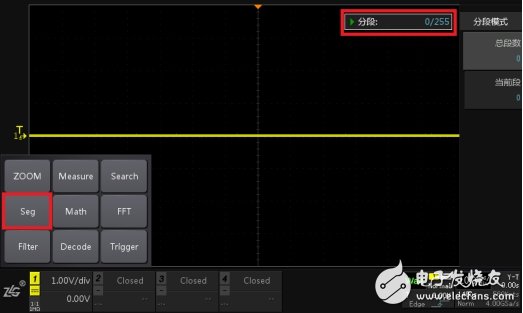
Figure 5 segmentation storage settings
Set the trigger mode to [Normal], adjust the trigger level to the appropriate position, and wait for the small probability abnormal signal to arrive.
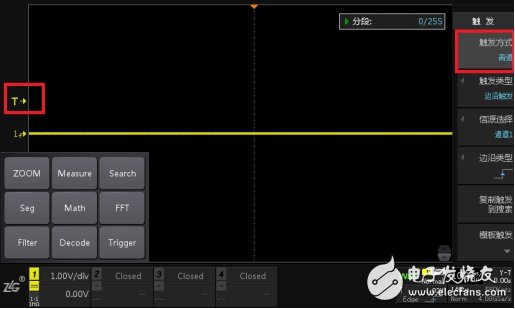
Figure 6 trigger mode settings
By touching the probe with your finger, you can simulate the occurrence of a small probability abnormal signal. When the segmentation is completed, click [Stop], and click [Current Segment] to view all segmentation storage by turning the knob A/B. The waveform stored in the segment.

Figure 7 segmentation storage results
Fourth, the application of segmented storage1. Low duty cycle pulse or burst signal - there is a long idle time between the signal and the signal. In many cases, even if there is a large storage, it is difficult to achieve the desired acquisition time by reducing the sampling rate. And segmentation storage can be done very well.
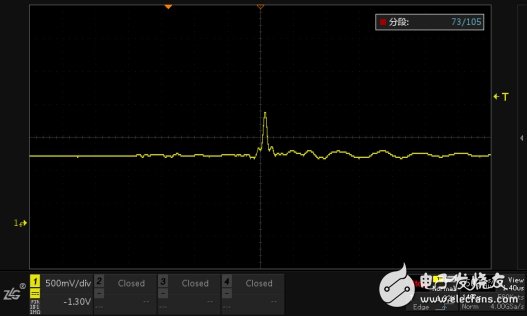
Figure 8 low duty cycle pulse signal
2, serial bus analysis - serial bus transmission in the form of data packets, the idle time between the package and the package will occupy the precious storage resources of the oscilloscope, using segmented storage, the oscilloscope can only collect data packets, idle time is not sampled . While maintaining a high sampling rate, it is also possible to collect more data packets for decoding and analysis.
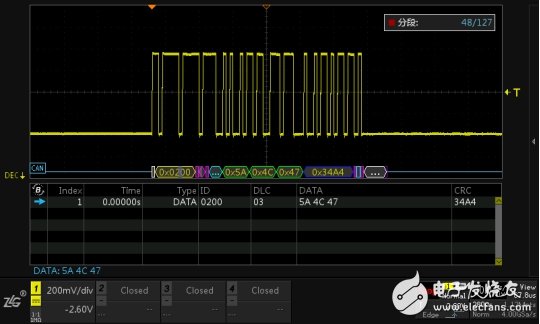
Figure 9 bus analysis
The segmentation storage function mainly solves the problem of long-term monitoring of small-probability abnormal signals while maintaining a high sampling rate. For limited storage, if you want to sample a longer time waveform, you can only reduce the sampling rate. Even if you reduce the sampling rate, you can't meet the sampling time length requirement. By segmentation storage, the storage is divided into several segments. The idle signal between the segment and the segment does not trigger sampling, thereby maintaining a high sampling rate, that is, acquiring the signal of interest for a long time without losing the signal detail information.
2V Lead Acid Battery,Rechargeable Lead Acid Battery,12V 60Ah Lead Acid Battery,Lead Acid Battery For Railway
Henan Xintaihang Power Source Co.,Ltd , https://www.taihangbattery.com